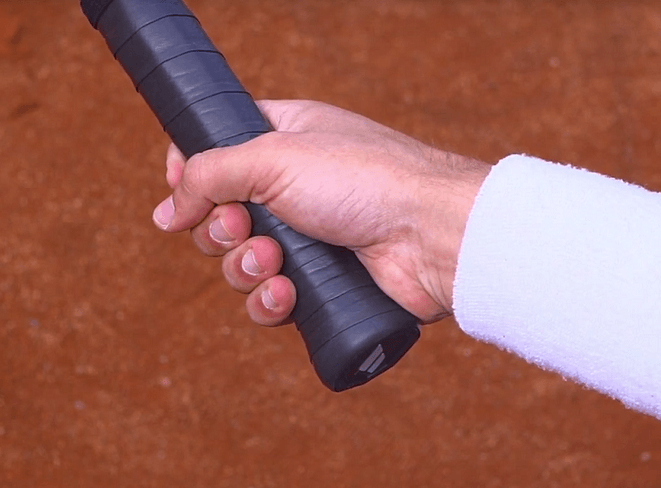10% extra sleva na více než 600 exkluzivních produktů Použij kód "EXCLUSIVE10" hned teď.
Grip strength

How can you determine the grip strength?
The matching grip size is enormously important. It not only helps you get the most out of your racket, it also protects you from injury. The grip size can be determined by grasping the tennis racket with the striking hand in the forehand grip. The little finger of the other hand should now fit exactly between your fingertips and your palm. In case of uncertainty regarding the correct grip size, choose the smaller size.
Rule of thumb: There should be room for the little finger between the fingertips and the palm of the hand when surrounding the handle.
Rule of thumb: There should be room for the little finger between the fingertips and the palm of the hand when surrounding the handle.
The grip
What grips are available?
There are two groups of grips: the basic grip and the overgrip.
The basic grip is present on each racket from the beginning. This grip band is available in different thicknesses from 1.5 to approx. 2.5 mm. Most basic grip bands are between 1.8 and 2.0 mm.
The overgrip or overband is wrapped over the existing baseband. Also this grip is available in different thicknesses from 0.4 to 0.8 mm.
The basic grip is present on each racket from the beginning. This grip band is available in different thicknesses from 1.5 to approx. 2.5 mm. Most basic grip bands are between 1.8 and 2.0 mm.
The overgrip or overband is wrapped over the existing baseband. Also this grip is available in different thicknesses from 0.4 to 0.8 mm.
Which functions do grips have?
The grip as a basic grip has several tasks:
- By choosing the basic grip, the grip size can be adjusted.
- Depending on the thickness and hardness of the strip material more or less strong vibrations can be damped. The thicker and softer, the stronger the cushioning. Thinner and harder attenuates accordingly less, but offers more feedback.
- Absorbs a large part of the vibrations - The basic grip takes over the main tasks when absorbing the hand sweat.
- For players who play without overgrip, the basic grip creates the grip through the surface quality.
The basic grip is already on the racket. All properties of the basic grip are subject to wear, so that a regular check and possibly the replacement of the basic grip is urgently recommended.
The application should be done professionally, as the function can be impaired if not. The main task of the overgrip is to create a comfortable grip. Here, a distinction can be made between "dry overgrips" and "sticky overgrips":
The application should be done professionally, as the function can be impaired if not. The main task of the overgrip is to create a comfortable grip. Here, a distinction can be made between "dry overgrips" and "sticky overgrips":
- Dry overgrips should be used if you sweat quite a bit, otherwise "drying out" of the hand can lead to blisters or chafing. When new, the bands feel rather rough and dry.
- Sticky overgrips are often called "tacky". These are more or less adherent and have a smooth surface. Both grades complement the existing baseband by absorbing the hand sweat and providing improved cushioning. Since they have no adhesive film, anyone can easily change the wrapping without damaging the grip. In principle, it is important to regularly replace both types of grips.
How important is a fresh grip?
A fresh grip is very important for optimum grip and playing comfort. In addition, it ensures a comfortable lying of the racket in the hand. The regular changing of the grip should be routine. We recommend a white grip , as this does not get any color pigments and you can see if this is dirty. The grip should then be changed if the grip noticeably declines or if the uppermost layer of the grip already shows slight signs of wear. A reliable rule of thumb for a time does not exist. At the latest when colour changes the grip should be changed.























